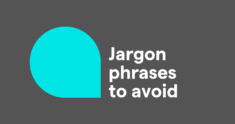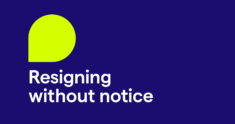
A LinkedIn summary is a concise description that showcases your personality and professional journey. Located at the top of your LinkedIn profile, it’s an opportunity to stand out from the crowd and make a memorable first impression. You can think of it like the trailer to the movie of your professional life. It’s the sneak peek, the elevator pitch, and the first impression all rolled into one.
LinkedIn summaries and first impressions are important, but that doesn’t mean writing has to be challenging. Let’s decode the art of crafting a compelling LinkedIn summary and why having a good one is critical to your application.
What is a LinkedIn summary?
A LinkedIn summary, sometimes called the LinkedIn “About” section, is located at the top of your LinkedIn profile, below your profile picture. It’s where you can briefly describe your personality and professional background in up to 2,000 characters.
Why should you have a LinkedIn summary?
Your LinkedIn summary is the digital equivalent of a first impression, offering a concise yet compelling introduction to your career journey and aspirations. It also acts as a personal branding tool, showcasing your unique qualities, values, and professional philosophy.
The best way to attract positive professional attention is by highlighting your accomplishments, the impact of your work, and the value you bring to the professional world. By including relevant keywords, your summary can also enhance your profile’s visibility and searchability, making it easier for others to find and connect with you.
If you write it well, it serves as a conversation starter, prompting more meaningful connections. Ultimately, your summary provides a holistic view of your professional identity, encapsulating your story, expertise, and goals.
What to include in a LinkedIn summary
Your LinkedIn summary doesn’t have to be complicated. You can write it using what you already know and are excited about. Here’s what to include:
What you’re passionate about
Including what you’re passionate about gives recruiters insight into your personality. Your passions are what motivate you and set you apart.
You can share passions relevant to your career to show recruiters the following:
- How your interests align with your professional aspirations
- Enthusiasm for your field
- Your commitment and expertise
- The impact of your work
- Relevant keywords
- Your future goals and aspirations
Past experience
Without reiterating your entire résumé, briefly include your most relevant and impressive work experience. To make it more compelling, put that experience into context. Pair it with results, notable names, and a time frame.
Share your experience in these three ways:
- In the first sentence, explain how long you’ve been working in your field
- The most prominent companies you’ve worked for
- How you helped those companies
Present role
If you are currently employed, there are two ways to include your current position effectively. First, you can include your job title in your first sentence. Secondly, you can include a sentence showing your value to recruiters and hiring managers. A sentence that starts with “I help [the types of companies you work for] . . . ” and ends with a value proposition or metric that indicates how you have performed in your role.
Successes
Your achievements are the most persuasive and captivating piece of your LinkedIn summary. The most readable way to present these is with a list of bullet points. If you can, include metrics that back up your accomplishments and show how you can help your future employers.
Personal story
Most of the reason someone will read your LinkedIn summary is to get to know you! Sure, they’re getting to know you professionally, but including relevant aspects of your personal story helps create a holistic view of you as an employee.
Here are key aspects of your story that you might consider including:
- Your background: education, unique experiences, challenges you overcame
- Career journey: career progression, major milestones, transitions, turning points, significant promotions, industry shifts, or non-traditional career moves
- Passions and interests: hobbies, volunteer work, or community involvement that demonstrates your commitment and values
- Professional values: values, ethics, and principles
- Work philosophy: your work philosophy and how it aligns with your career goals
- Unique qualities: experiences or skills that set you apart in your field, such as languages spoken, cultural experiences, or unconventional career paths
What you’re looking for
Concluding your summary with your future goals and aspirations shows employers what you’re looking for. If you’re happy with your current role and company, your goals could focus more on upskilling, networking, or industry involvement. If you’re looking for a new position, you might include what you aim to achieve in your long-term career, what you plan to contribute to your industry, or what type of change you’re looking for. If you’re changing your career completely, this is a great place to describe what you hope your new career looks like.
5 tips for writing a strong LinkedIn summary
Are you ready to write your LinkedIn summary? Be sure to do these five things to give your profile the best chance for success.
1 Add a strong opener or hook
LinkedIn only shows about 300 words above the fold before a viewer has to click “see more.” To reel them into reading more, include a strong hook.
Try one of the following to create a compelling LinkedIn Summary hook:
- A provocative statement
- An impressive stat or accomplishment
- Something you’re passionate about
- Speak directly to the reader
- A key personality trait
2 List data
Showcase your professional accomplishments by emphasizing how you contributed to your employer’s or client’s success. Including data that quantifies your accomplishments bolsters credibility, impresses recruiters, and highlights your value.
Include the following types of data to emphasize your professional accomplishments:
- Quantifiable achievements
- Revenue and profit metrics
- Key performance indicators (KPIs)
- Productivity metrics
- Certifications and qualifications
- Awards and recognitions
- Project outcomes
- Quantifiable skills
- Leadership metrics
- Volunteer and community involvement
3 Highlight your skills
Your skills indicate whether you’re a technical fit for the job. But recruiters aren’t only looking for hard skills—soft skills are important too! Highlighting the most relevant skills to your professional background alongside your most prominent personality traits helps hiring managers get a holistic view of the value you’ll bring to their team.
Consider including a mix of some of the following hard and soft skills:
Hard Skills
- Job-specific skills
- Project management
- Industry-specific knowledge
- Language skills
- Software proficiency
- Time management
Soft Skills
- Adaptability
- Teamwork
- Communication skills
- Problem-solving
- Initiative
- Customer service skills
4 Include a CTA (i.e., “get in touch”)
Incorporating a call to action (CTA) makes it easier to get in touch with you. Include your email address and a quick sentence suggesting that viewers contact you.
5 Add keywords
LinkedIn functions just like any other search engine. When someone searches for keywords, LinkedIn will spit out a results page with the profiles, companies, and posts that best match their search.
Recruiters and hiring managers look for specific keywords to find new candidates. If they see the keywords they’re seeking, they’ll know instantly whether you’re the right fit. How do you know which keywords to include? Use our résumé keywords guide to find the right keywords inside job descriptions.
LinkedIn summary examples
LinkedIn summary example for someone who loves their career
I’ve been obsessed with spearheading innovative sustainable architecture projects for the past decade. I help organizations reduce environmental impact while delivering aesthetically pleasing designs.
Here’s how I’ve helped my past firms:
- Spearheaded a LEED Platinum–certified commercial building, reducing energy consumption by X%.
- Designed eco-friendly residential complexes using recycled materials, garnering multiple sustainability awards.
- Led a sustainable urban redevelopment project, transforming a brownfield into a green, community-focused space.
- Collaborated on a zero energy school building, providing a model for sustainable educational facilities.
- I get excited about opportunities where I can further advance sustainable design and collaborate with like-minded professionals who share my vision for a greener future.
I love connecting with new people; you can reach me at [email].
Career change LinkedIn summary example
As an educator passionate about inspiring students to learn and grow, I’m embarking on a new journey in the dynamic area of web development. I’m excited to bring my enthusiasm for education and tech-driven aspirations to solve new problems in the EdTech industry.
My background in education, where I’ve dedicated the past seven years to empowering students and fostering critical thinking, has equipped me with valuable communication, problem-solving, and adaptability skills. In the classroom, I’ve seen the profound impact of technology in shaping modern learning experiences, which has fueled my desire to create innovative digital solutions.
Now I’m excited to leverage my educational background and combine it with my newfound passion for web development. I’m seeking opportunities to contribute to creating interactive, user-friendly websites and applications and help organizations harness the full potential of the digital realm. I look forward to connecting with professionals who share my enthusiasm for technology and education, and I’m open to discussions on collaboration, learning, and growth.
If you’re interested in connecting, discussing potential collaborations, or sharing insights, please contact me at [email]. Let’s explore the possibilities at the intersection of education and technology.
Professional LinkedIn summary example
My work in content strategy has been marked by a commitment to delivering results. I’ve worked with renowned companies, including [X], [X], [X], and more, where I’ve applied data-driven insights to shape and refine their content. I’ve achieved substantial growth in organic traffic, user engagement, and brand recognition.
As a Content Strategy Manager, my passion lies in crafting content that informs, educates, and engages. In my current role, I help our company drive content strategy by enhancing the user experience, optimizing content performance, and maintaining brand consistency. The impact of our work is evident in the seamless user journeys and enhanced communication that our content achieves.
Successes:
- Boosted organic traffic by X% through SEO optimization and content improvements.
- Led the development of content that resulted in a X% increase in user engagement.
- Established content guidelines and improved brand consistency, enhancing recognition and trust.
Beyond my professional journey, I am enthusiastic about reading and writing fiction, which complements my commitment to effective communication and resonating with audiences.
Looking ahead, I am excited about the evolving landscape of digital content and its potential for innovative strategies and user-centric experiences. I am open to networking and collaborating on projects that push the boundaries of content strategy and digital marketing.
If you share my enthusiasm for content strategy or are interested in discussing potential collaborations, please feel free to connect with me!
LinkedIn summary FAQs
What is a LinkedIn summary?
A LinkedIn summary, sometimes called the LinkedIn “About” section, is located at the top of your LinkedIn profile below your profile picture. It’s a brief section of your LinkedIn profile where you can concisely present an overview of your personality and professional background.
Why is having a strong LinkedIn summary important?
The summary or “about” section is an important part of your LinkedIn profile because it’s often one of the first things people see when they visit your profile. You can use it to show potential employers and colleagues your personality, professional background, skills, and career goals.
What are some tips for writing your LinkedIn summary?
Here are five tips for writing your LinkedIn summary.
- Add a solid opener to attract recruiters.
- Include data to boost your credibility.
- Highlight your most relevant skills.
- Include a call to action.
- Add keywords to make your profile more searchable.






